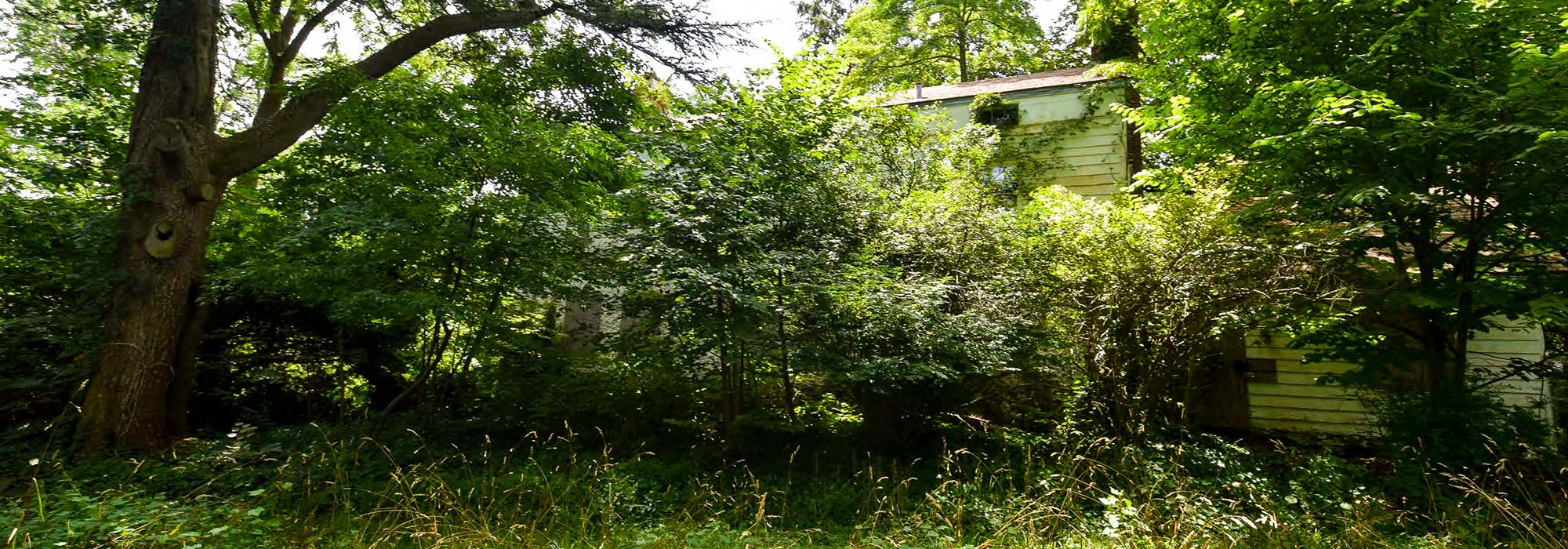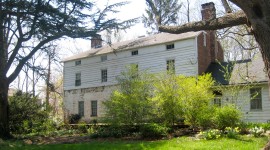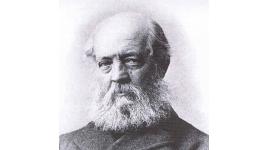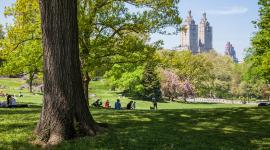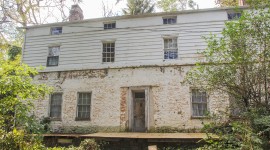Olmsted's Tosomock Farm, Staten Island, N.Y.
History
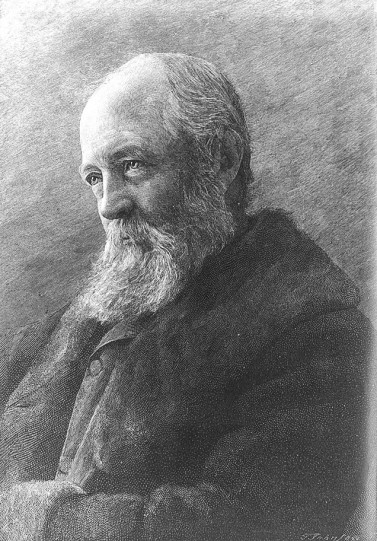
Situated on a slope overlooking Raritan Bay, a two-story farmhouse and 1.7-acre grounds are all that remains of Frederick Law Olmsted, Sr.’s (1822-1903) former residence, ornamental farm, and experimental landscape. The site had been used as a wheat farm since the late seventeenth century, and the stone farm house, constructed in the early eighteenth century, became the core of more than two centuries of expansions and renovations.
Known as “Tosomock Farm” during Olmsted, Sr.’s, ownership from 1847 to 1866, the site, purchased for him by his father, became the young gentleman farmer’s living laboratory. The property encompassed 100 acres of farmland and 25 acres of woodland at the time, on which Olmsted, Sr., conducted agricultural experiments that directly influenced his future designs. He cultivated thousands of fruit trees and other specimens, including Cedars of Lebanon, black walnut, mulberry, linden and ginkgo trees – some of which remain on the property today. He also honed his technical and design skills, creating a dramatic, curved driveway, draining marshes to increase usable acreage, moving outbuildings farther away from the house to hide them from view, and adding water plants to the utilitarian barnyard pond to create more scenic environs. The farm was an economic failure, but served Olmsted, Sr., well as the site where he and Calvert Vaux completed their plan that won the competition for Central Park, worked on plans for Prospect, Morningside, and Riverside Parks, and where Olmsted began his relationship with the Vanderbilt family, which later led to many commissions.
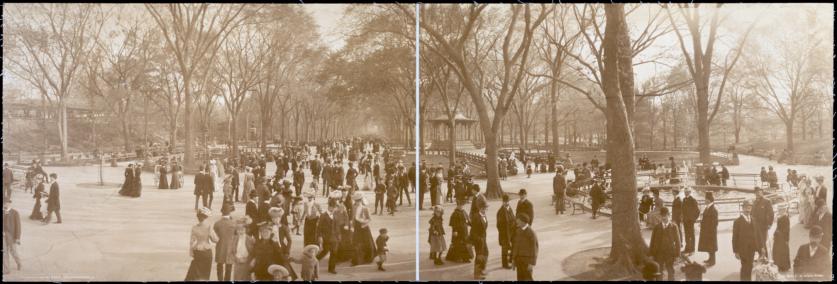
After Olmsted’s tenure, a real estate developer created a resort in the 1880s. The landscape continued to evolve, with walks and drives cut into wooded areas, and croquet and lawn tennis courts established. In the mid-1920s, Hylan Boulevard was constructed along Staten Island’s south shore, extending from Rosebank to Tottenville and cutting through the property. The land was then subdivided into residential lots and developed, while the Olmsted house went to private ownership. In 2006, the New York City Department of Parks and Recreation acquired the house and grounds with plans to open it to the public.
Now formally called the Olmsted-Beil House Park, the property is recognized as a New York City Landmark. Though it met the eligibility criteria for listing in the National Register of Historic Places in 1999, the site is not currently listed.
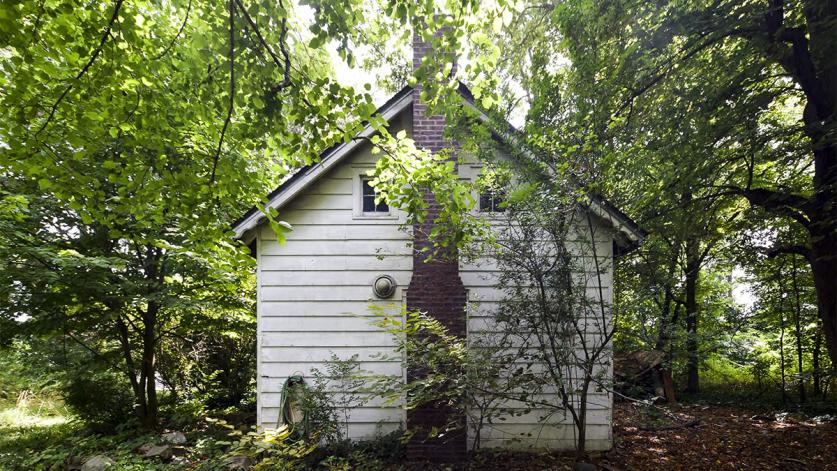
Threat
The house has been vacant since the Parks Department purchased it in 2006, and the structure and surrounding land have fallen into a state of neglect. The grounds are woefully overgrown, and the farm house has deteriorated significantly. Initially, thanks to a $20,000 grant and technical oversight from the non-profit New York Landmarks Conservancy, emergency repairs were made to ensure the building was weathertight – including sealing the leaking roof, repointing the walls, and covering the windows and doors with plywood. These were essential efforts to mitigate further damage, however, more is needed to help secure its future.
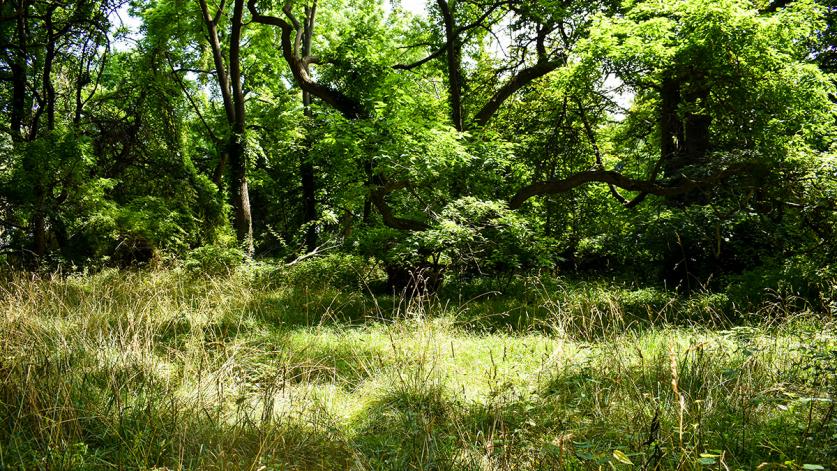
The property is set back from the surrounding streets, incurring accessibility issues, and though it is officially a city park, the landscape features several “Historical Site: No Trespassing” signs, further deterring public engagement. Efforts to repair, enhance, or improve the site have been hindered by the Department of Parks’ limited funding; the desire to purchase adjacent property, which was originally part of the Olmsted farm; and, the need for a local group to advocate for and help support the property.
In July 2017, the New York Landmarks Conservancy wrote NYC Parks Commissioner Mitchell Silver and offered to pay for an updated structures report. On August 2, 2017 the Conservancy announced that the Department, following an influx of emails sent to Commissioner Silver by concerned citizens, has accepted their offer to pay for an updated conditions survey of the house. This is a first step towards protecting and saving the property, and will, at the very least, ensure proper documentation of this important historic site. The results of the survey will inform the Conservancy’s next step, most likely a request to the City for capital funding for restoration expenses. This is the beginning of a lengthy, multi-year process.
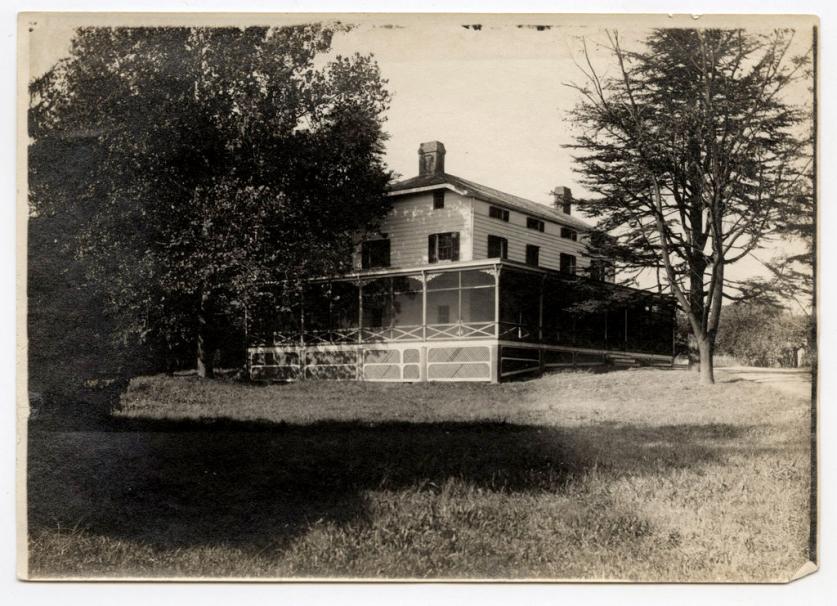
Get Involved
There is a need for the establishment of a local, non-profit “Friends” group to continue to raise funds and help move this project forward. The public will also need to respond to periodic calls for action, including calls to solicit funding from the City of New York. The Cultural Landscape Foundation will continue to monitor the situation, posting updates when there are direct courses of action for the public to take. At this stage, concerned citizens may contact the Department of Parks and Recreation to show their support of the project.



